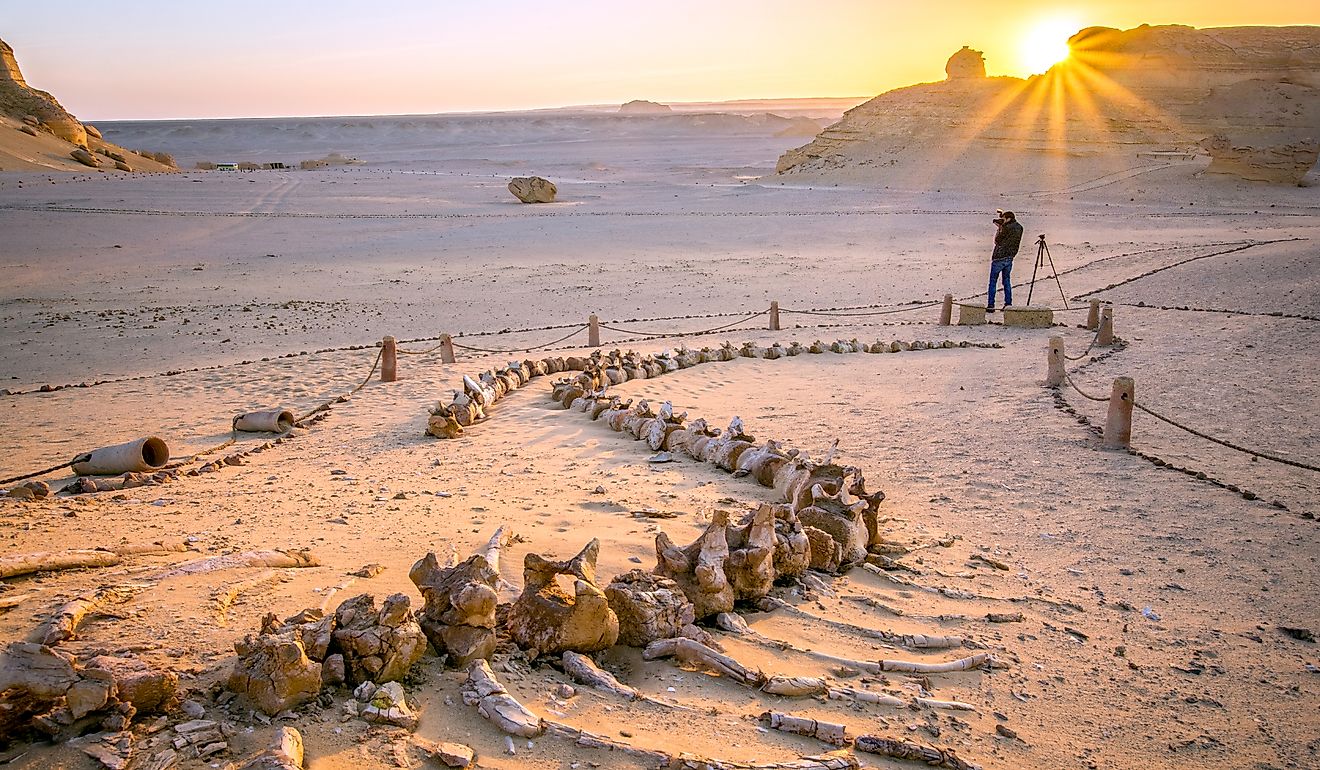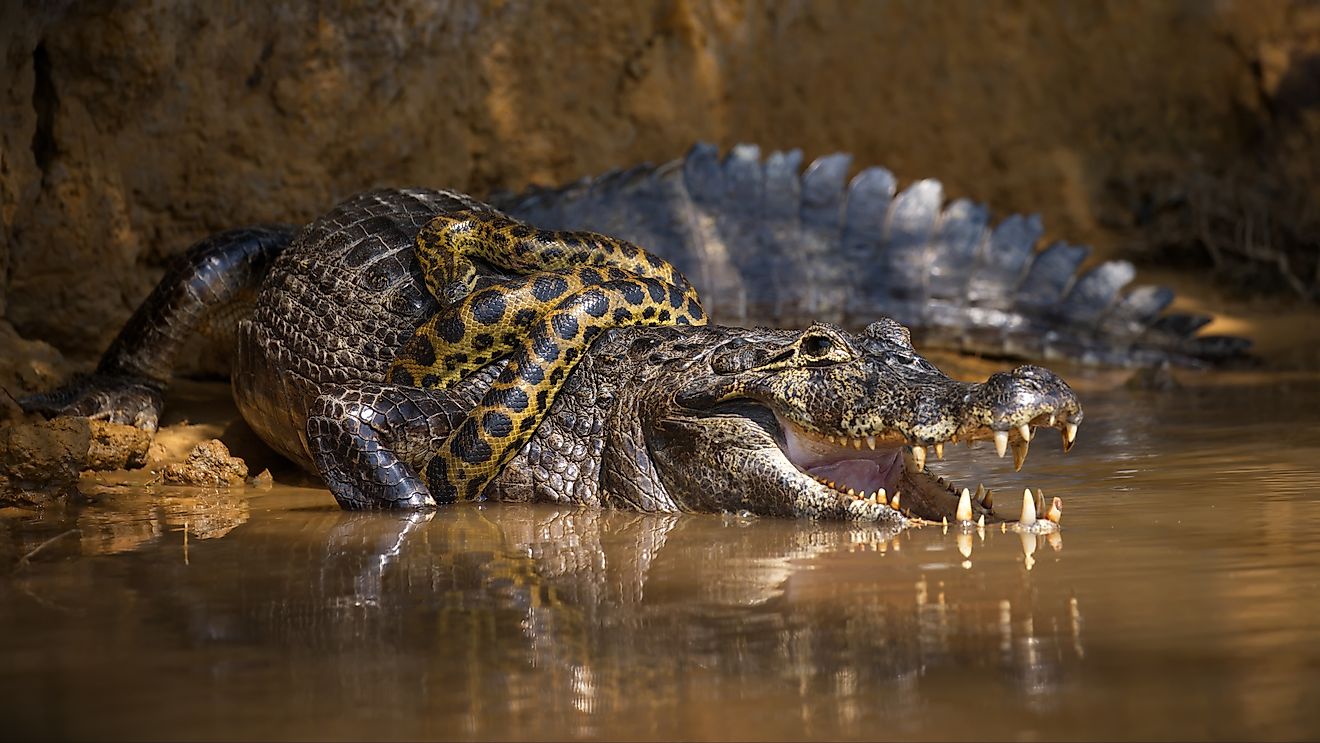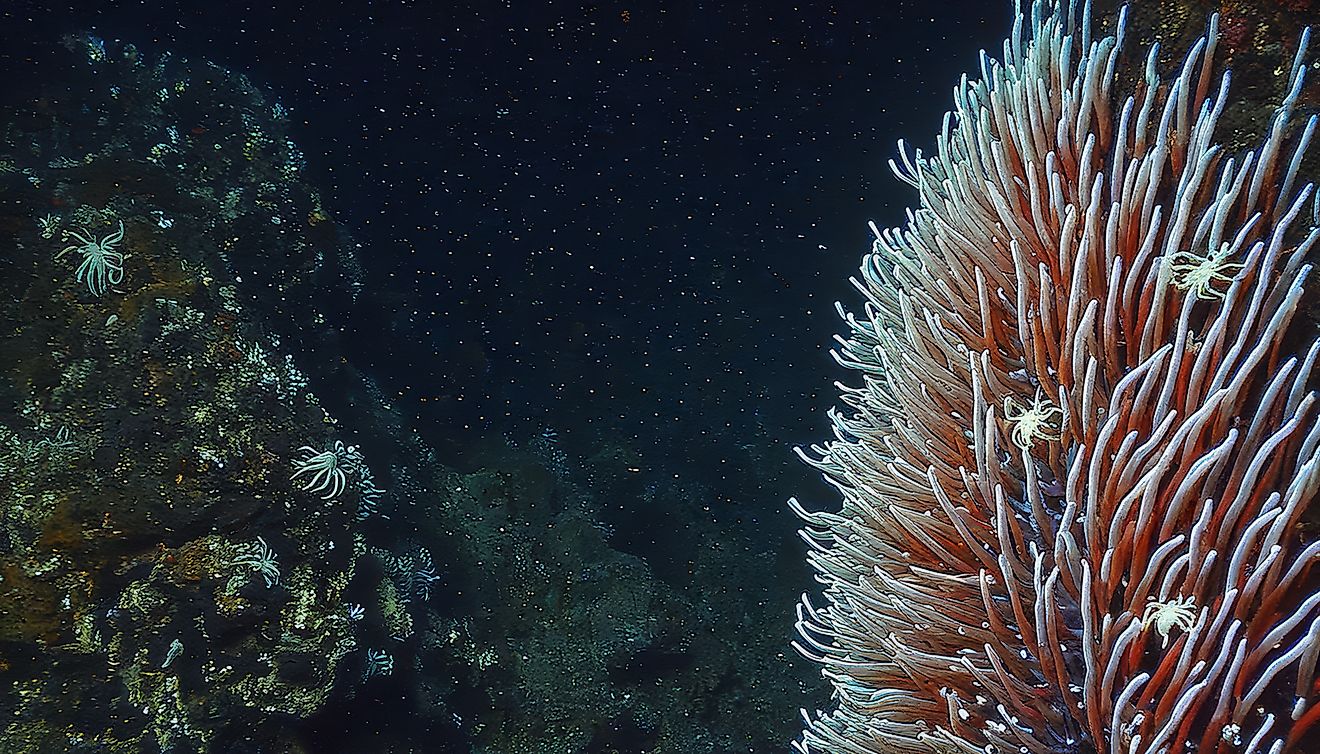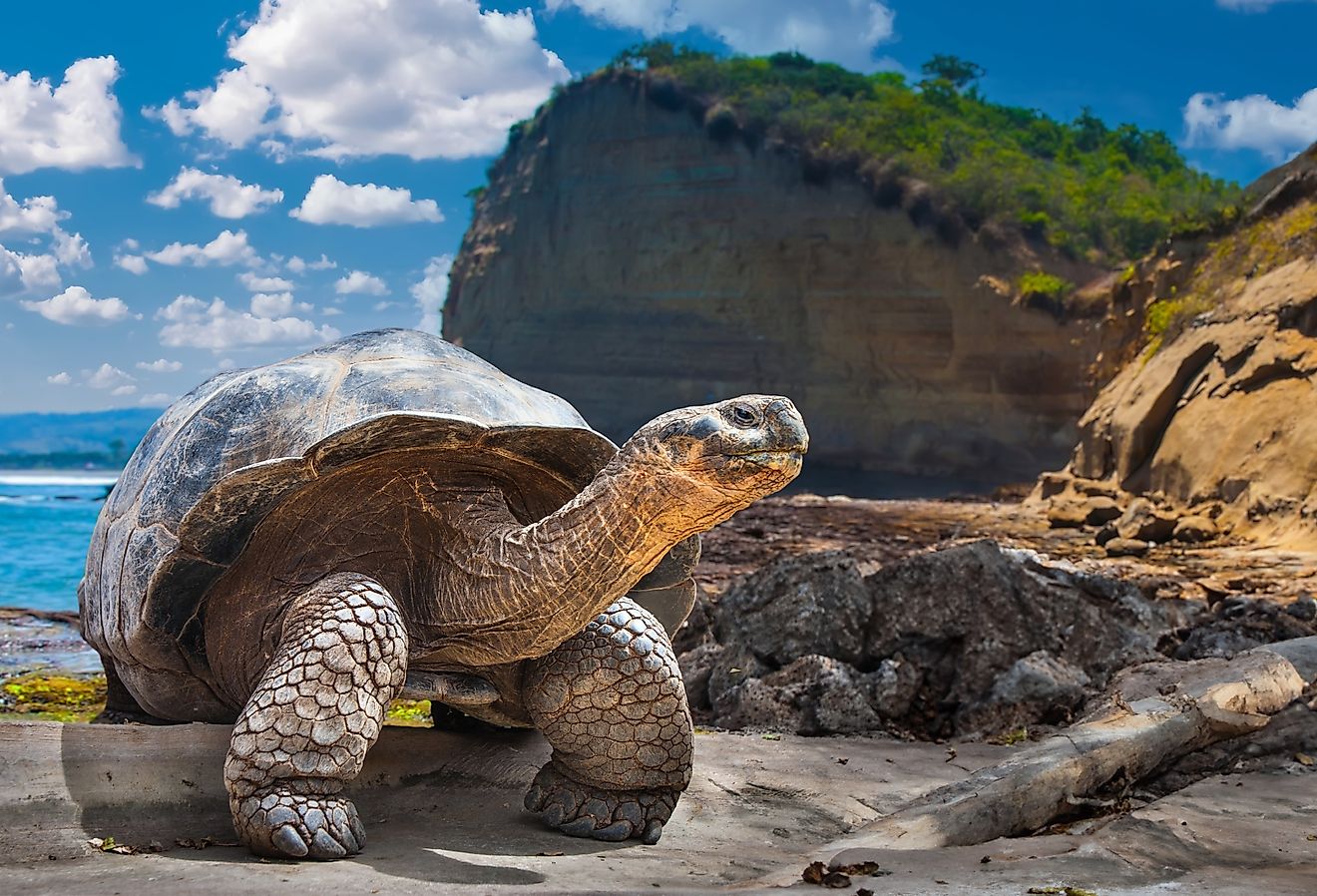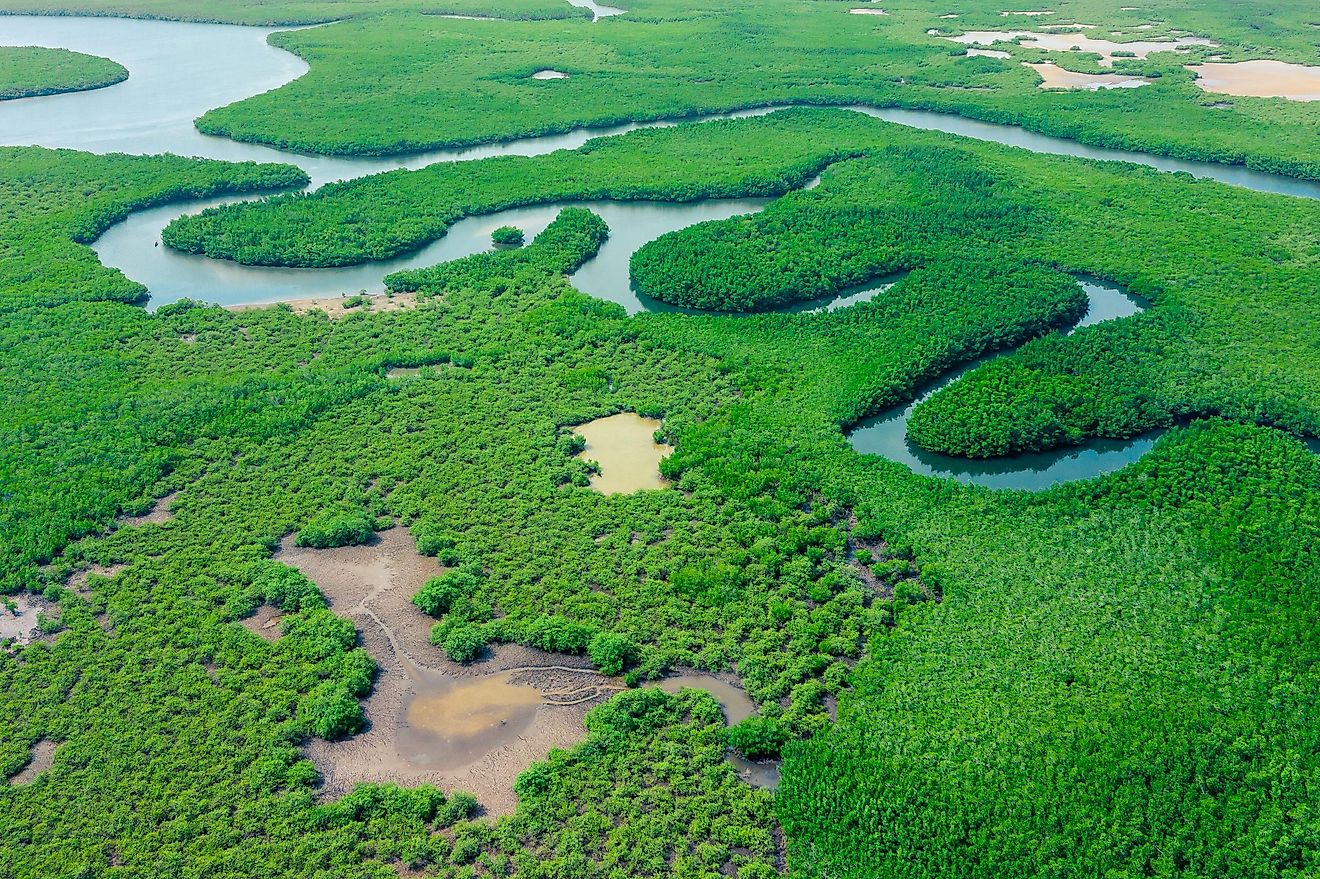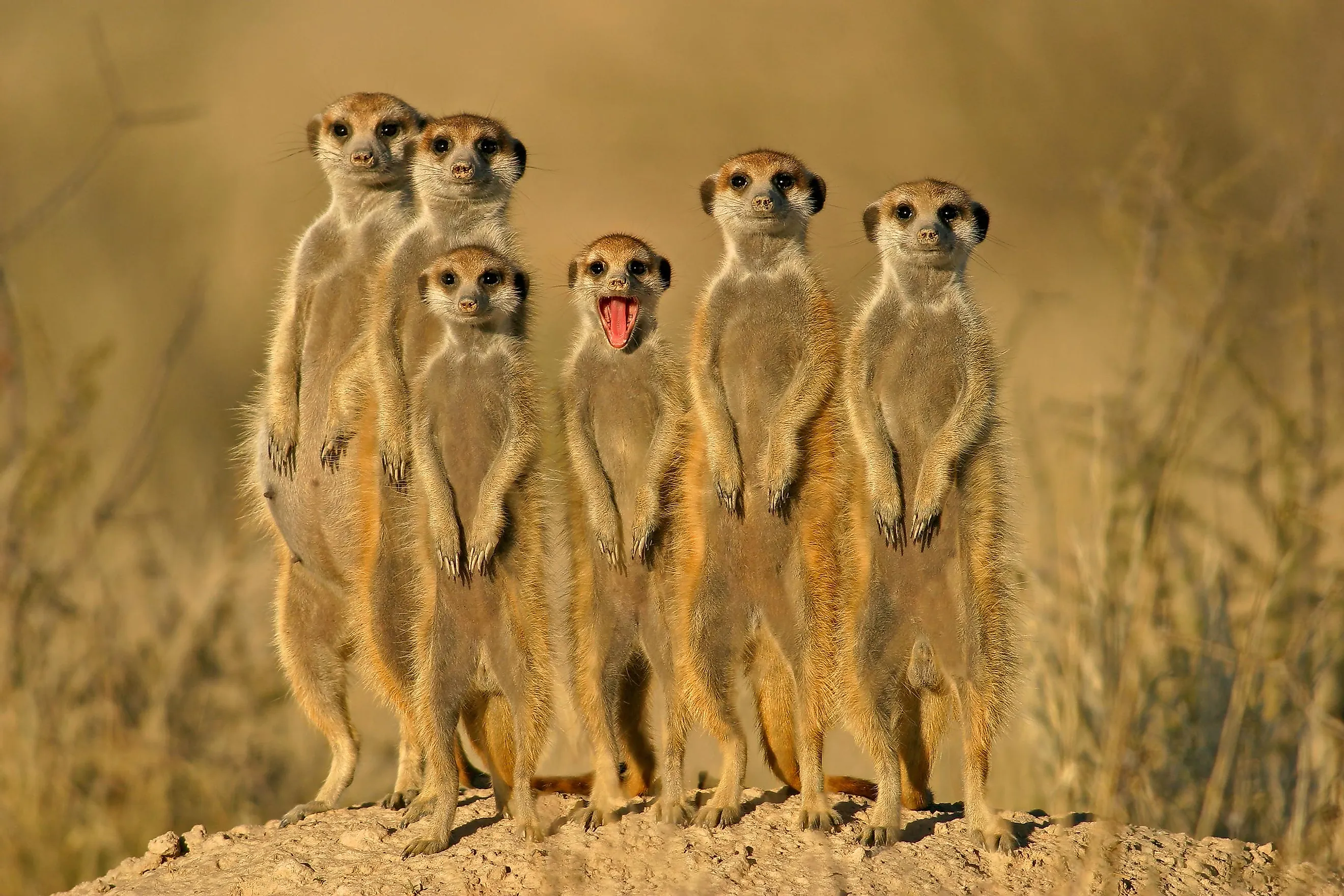
10 Animals That Live In The Desert
The word desert originates from the Latin word desertum and means an unpopulated place. Often thought of as containing only sand, deserts are classified as arid environments receiving an average of no more than 10 inches (25 centimeters) of precipitation per year. Deserts are categorized based on the cause of their dryness. Desert animals have adapted to sweltering temperatures above 100 degrees Fahrenheit (37.7 degrees Celsius) in the summer and below-freezing in the winter. Animals living in deserts can withstand prolonged intervals with minimal water. The following list is a few animals that have adapted to extreme desert conditions.
Snakes
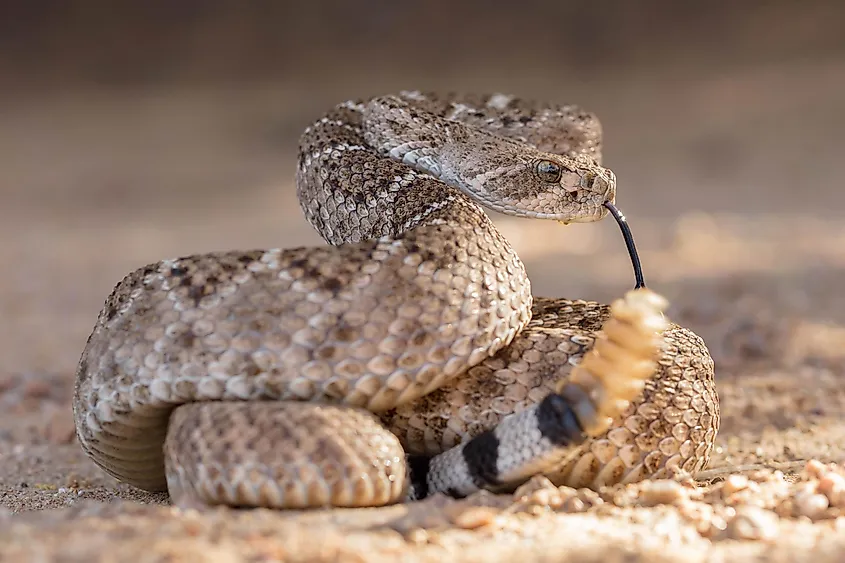
Multiple snake species can survive the extreme desert environment. The most well-known snake in the United States and Mexico is the Diamondback Rattlesnake. Found in the Mojave, Sonoran, and Chilhuahuan Deserts, the Diamondback Rattlesnake is medium-sized and venomous. The head is triangular. The base color varies from dusty to brown to pinkish or chalky white with hexagonal shapes from its head to its rattle, referring to its name, Diamondback Rattlesnake. The rattle consists of the protein keratin; the same protein produces hair and nails. The rattle can move 60 or more times per second, creating a distinct sound to warn off predators. The Diamondback Rattlesnake exists on a diet of small mammals swallowing their prey whole and can survive weeks without water. When they find a water source, they make the most of it by storing water in its scales.
Horned Lizards
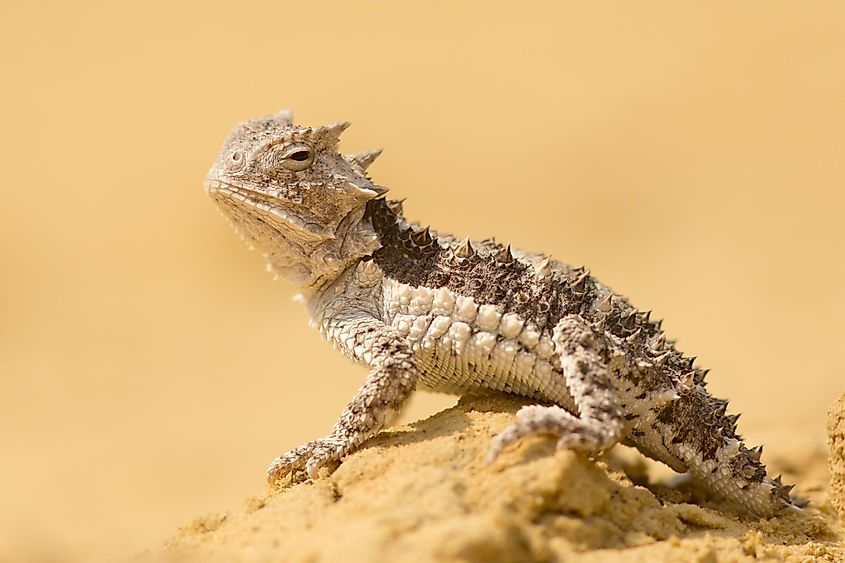
Medium-sized with a flat body and a row of fringe scales, Horned Lizards reside in the western United States. The lizards have a beige, tan, or reddish torso and can vary in color depending on the soil. Color variations help them flatten along the ground to camouflage with their environment. Scattered pointed scales cover the length of their body. Desert Horned Lizards are solitary and can be either nocturnal or active during the day. These lizards are opportunists and occupy burrows constructed by other animals. They bury themselves in sand or soil to escape the heat. To deter predators, horned lizards puff their bodies by filling their lungs with air, making them harder to swallow. Most notably, when threatened, the Horned Lizard squirts blood from its eyes to deter predators. Horned Lizards survive on a diet of ants and other insects. To collect water from rainfall, the Horned Lizard assumes a flattened posture by broadening their back and lowering their heads to get its mouth closer to the ground. This technique allows them to utilize their skin to hydrate.
Bilby
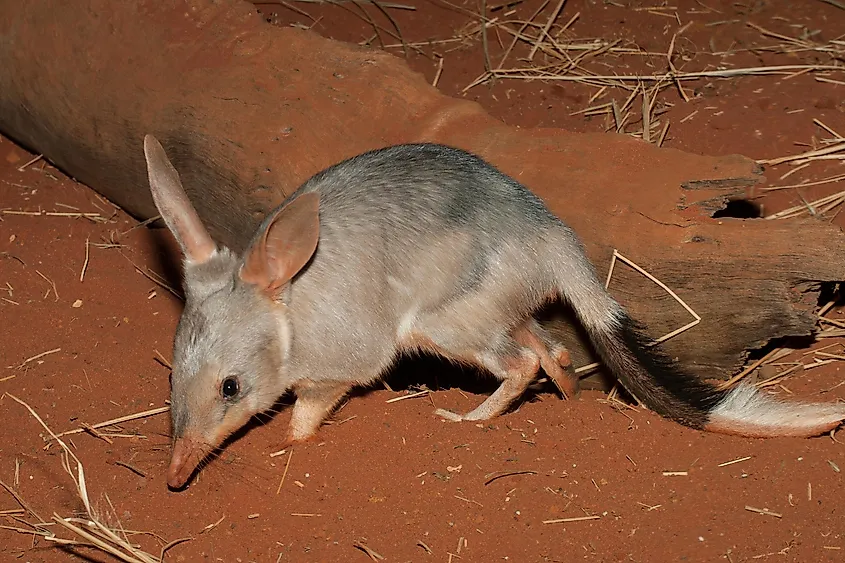
Known for its rabbit-like ears, the Bilby is a medium-sized marsupial with blue-grey fur and a long black tail with a white tip. Bilbies are native to and only reside in Australia. Bilbies are nocturnal, emerging at night to feed and mate. They stay near their burrows to quickly return for rest or protection from predators. Bilies use their forelimbs and thick claws to make burrows. Bilbies contribute to Australia's hot and dry environment by aerating the soil with their digging allowing vegetation to drop into their burrow and decompose. Seeds from the vegetation germinate, creating an environment for plants to grow. Bilbies receive their hydration from their food allowing them to survive in the desert climate.
Red Kangaroo
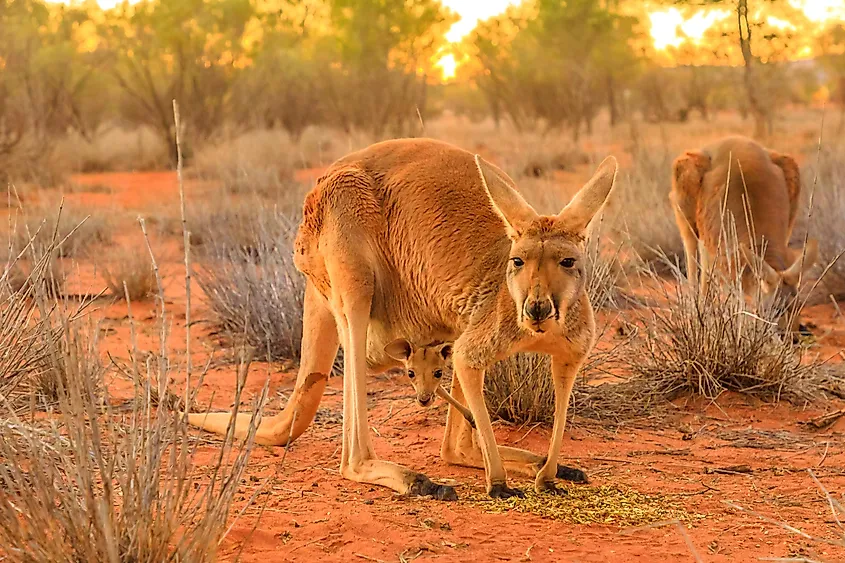
In Australia's deserts and open grasslands, resides the Red Kangaroo. The Red Kangaroo is the largest species of kangaroo and gathers in groups called mobs. Males are maroon with white faces and bellies. Females are smaller than males and bluish-gray. Kangaroos are the only bipedal marsupial, moving on two legs instead of all four. They cannot walk forward or backward. Kangaroos jump or hop to move and use their large tail for balance. The Red Kangaroos are herbivores and forage on grasses, leaves, roots, and low plants at dusk or dawn to avoid being active during the day when it is most hot. They spend daylight hours sleeping or lounging. When water is scarce, a diet of grazing on grass and leaves of shrubs provides them with their water and nutritional needs. When cooling down, kangaroos lick their forelegs to cool themselves. The saliva evaporates and reduces their body temperature.
Bearded Dragon
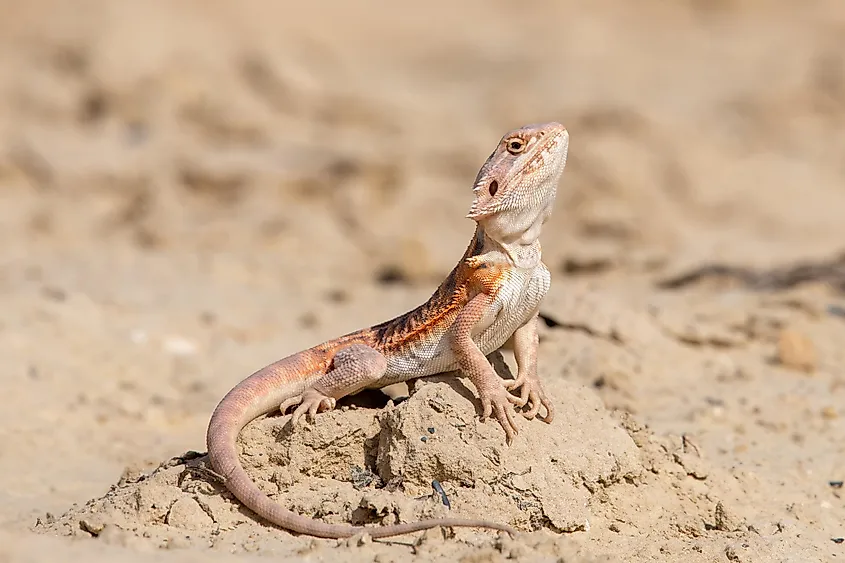
The Bearded Dragon is native to Australia and thrives in the desert climate. They have triangular heads with rows of spikes resembling thorns. When puffed up, the row of spiked scales on their neck resemble a beard, thus giving the lizard its name. The Bearded Dragon has four stout legs covered in rows of spikes and a tail that is usually half the length of its body. They are omnivores, dining on insects, small vertebrates, and vegetation. Their diet provides necessary hydration until more significant water is available. The desert heat provides the cold-blooded Bearded Dragon with an external heat source to raise its body temperature when needed. Lounging in the sun to warm and burrowing in shady places allows the Bearded Dragon to maintain a stable body temperature.
Silky Pocket Mouse
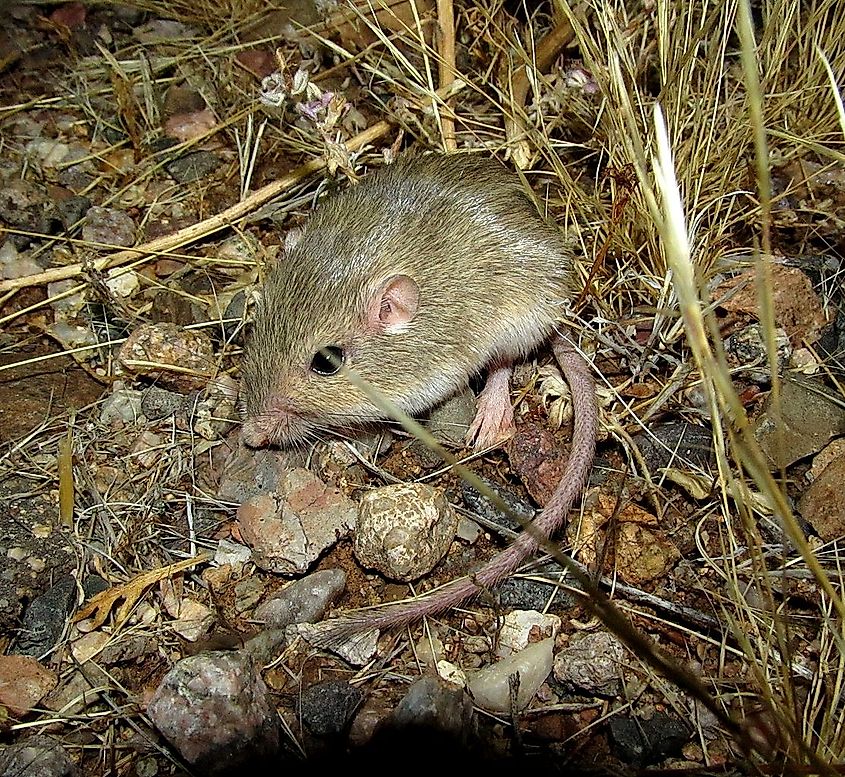
Pocket mice received their name for having cheek pouches used for carrying food. These mice reside in low-brush areas of deserts. Native to the southwestern United States and Mexico, the Silky Pocket Mouse prefers sandy, low-vegetated desert environments. This mouse species is small with soft, silky fur, short ears, and hairy tails. The Silky Pocket Mouse is nocturnal, spending their day cool underground. At night, they come out to forage for seeds. As they forage, the Silky Pocket Mouse stuffs seeds in the pocket of their cheeks to take back to their burrow. The seeds collected provide needed hydration. The kidneys of the Silky Pocket Mouse have adapted to the lack of water by minimizing water loss. This adaptation allows them to survive weeks without drinking water.
Meerkat
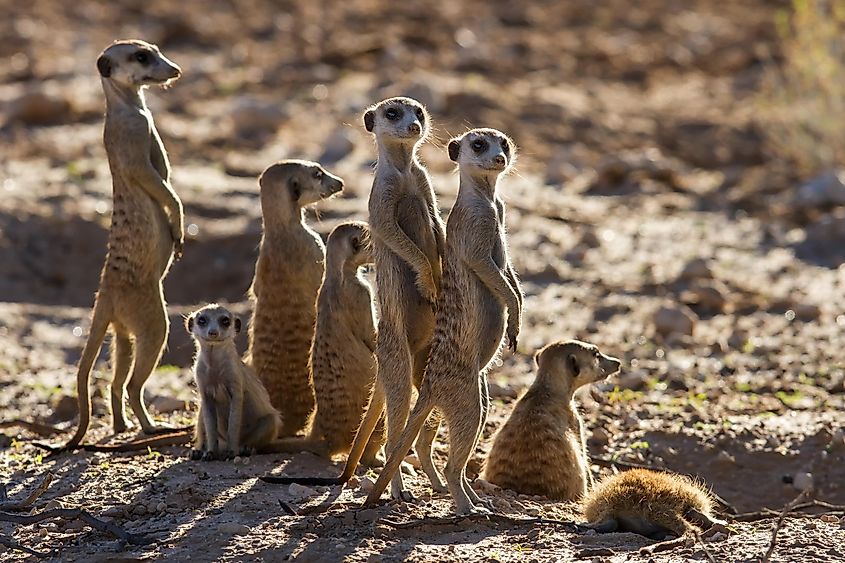
Disney fans are familiar with the Meerkat as the character Timon in The Lion King. Unlike the movie, Meerkats live in large groups called a gang or mobs. Meercats depend on their mob for companionship and safety. This small mammal is native to southern Africa's Kalahari Desert and has physical adaptations to assist in their survival. Meerkats have dark circles around their eyes that decrease glare from the sun. Their thin fur and dark skin assist in regulating their body temperature. Long horizontal pupils with a membrane that can cover their eyes allow Meerkats a wide range of vision and protection from the sand. Meerkats have long claws to help them dig and ears that shut to keep out the sand. When the sun is out, they come out from their burrow to sunbathe, groom, and forage for food. Their excellent sense of smell assists in foraging insects, lizards, spiders, birds, and small snakes. Meercats receive their hydration from their food. After the sun sets, they return to their burrow to snuggle in for the night.
Jackrabbit
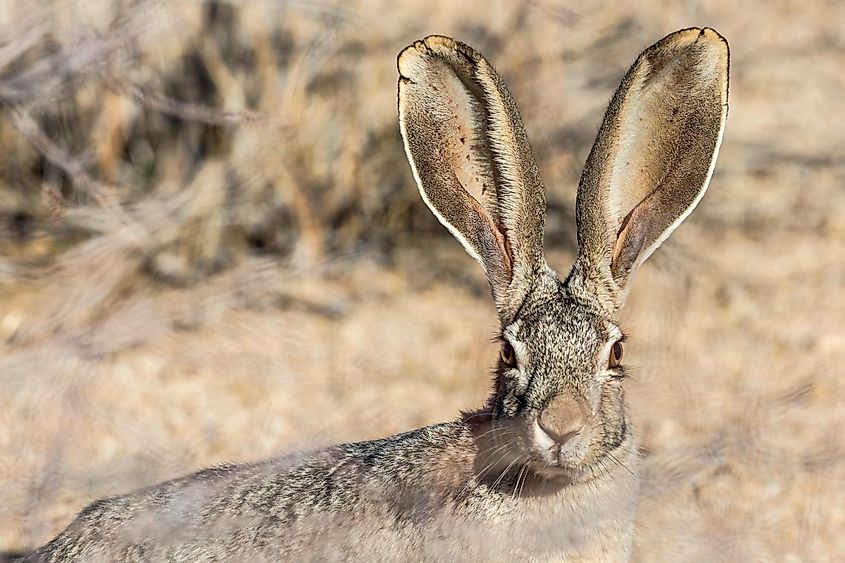
Jackrabbits use big furry feet and enormous ears to assist their survival in the arid desert areas of the western United States. The fur on their feet provides insulation from the heat on the sand. Their huge ears increase blood flow to release heat in hot weather and reduce blood flow to preserve heat on cold nights. Jackrabbits are herbivores feeding on plants such as sagebrush, mesquite, yucca, and many tough types of grass that are unappealing to most animals. Using two pairs of upper incisors, they nibble coarse leaves and twigs. Constant nibbling keeps the incisors a manageable size otherwise, the teeth will continue to grow. The Jackrabbit's appendix assists in the digestion of tough vegetation by breaking down food sources before reaching the stomach. Jackrabbits receive hydration from consuming plants and conserve water by dozing in shaded areas when the day is hottest.
Greater Roadrunner
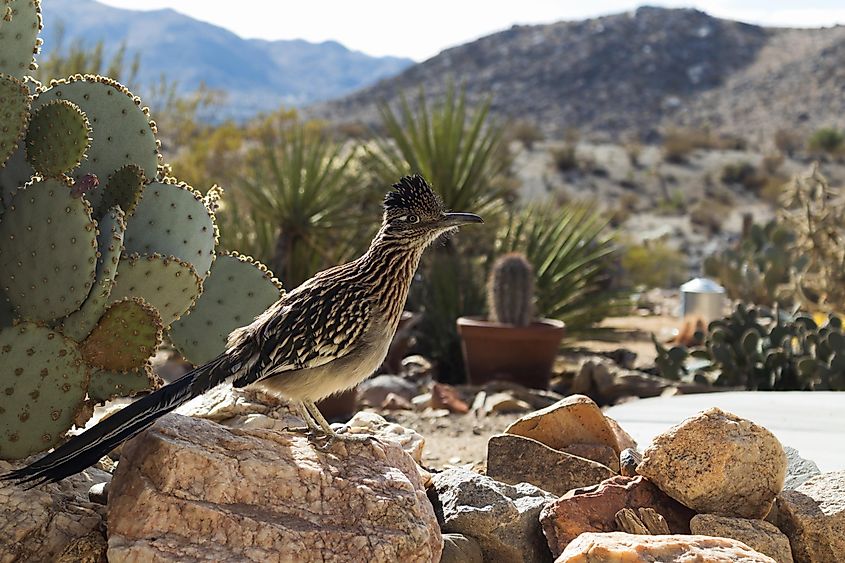
Although it cannot fly in the air, the roadrunner flies on the ground at speeds up to 200 miles per hour (321.87 kilometers per hour)! Zipping around North America, the Greater Roadrunner is most common in the Mojave Desert, Sonoran Desert, and the Chihuahuan Desert. This tiny bird is only two feet (60 centimeters) from the tip of its bill to the tip of its tail. Its feathers are mottled allowing it to blend within the environment. To adjust body temperature, the roadrunner flutters the unfeathered area beneath the chin dispelling heat. Greater Roadrunners consume small mammals, reptiles, and insects receiving needed water from their prey. Greater Roadrunners can dine on poisonous prey such as scorpions and rattlesnakes without being affected. They can also dine on horned lizards swallowing them head-first to avoid horns puncturing vital organs. When temperatures drop at night, the Greater Roadrunner withdraws shelter in rock formations or shrubs. The roadrunner shuts down vital bodily functions in a state of hibernation, redirecting energy to keeping warm at night.
Camel
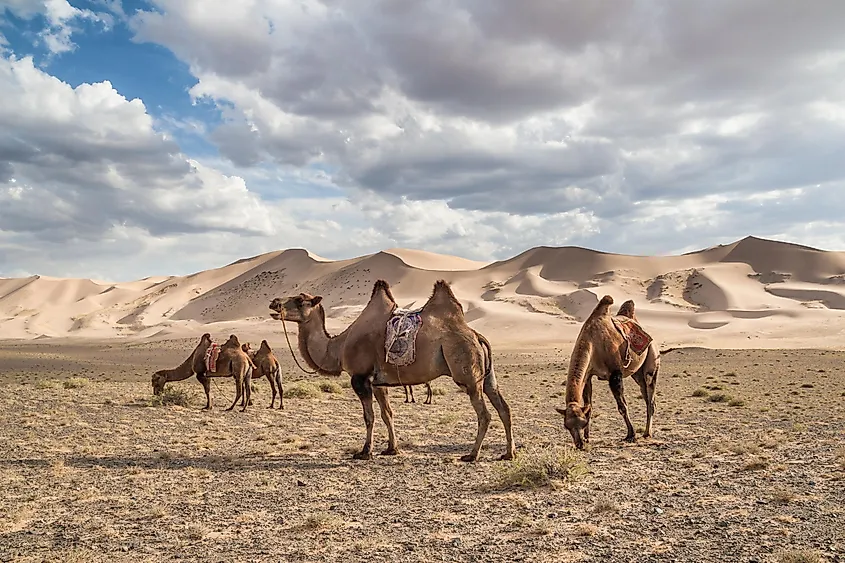
The camel is the most familiar desert animal in the world. There are two living species of camel, the Dromedary Camel and the Bactrian Camel. Dromedary Camels are considered semi-domestic and are found in the Sahara Desert. Bactrian Camels reside in the Gobi Desert in southern Mongolia and northern China. Dromedary Camels have one hump. Bactrian Camels have two humps. Their humps reserve nutritional energy created from rich fat allowing camels to survive long periods of time without eating or drinking. The hump deflates and flops over when depleted from use but reinflates when contents are restored. In addition to their humps, camels have other adaptations that contribute to their survival in sandy deserts. Camels have two rows of eyelashes and close their nostrils to protect their eyes and nose from the sand. Their broad, flat feet have leathery pads and two toes on each foot that assist with walking on sand without sinking. Within a few minutes, a camel can guzzle 40 gallons (152 liters) when it finds a water source. Drinking this much water in such a short amount of time would be lethal for other mammals.
Months without rain, extreme heat and cold, sandstorms, and flash floods contribute to extreme desert habitats. Mammals, lizards, snakes, and birds rely on hunting or foraging for hydration. Each of these animals possesses unique physical attributes contributing to its survival. Desert animals have large ears for dissipating body heat, lighter feathers or fur to reflect heat, and hairy or padded paws to walk on hot sand. These animals are nocturnal, live in a burrow, or rest in the shade to avoid overheating. Animals living in the desert have adapted to survive harsh conditions physically and environmentally.
